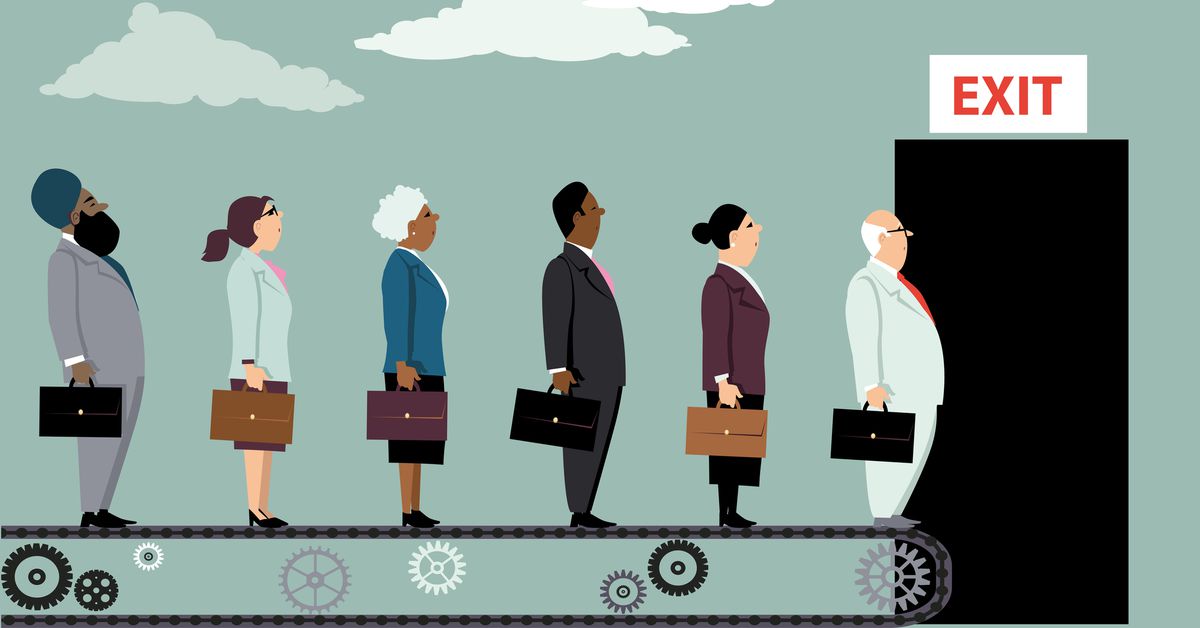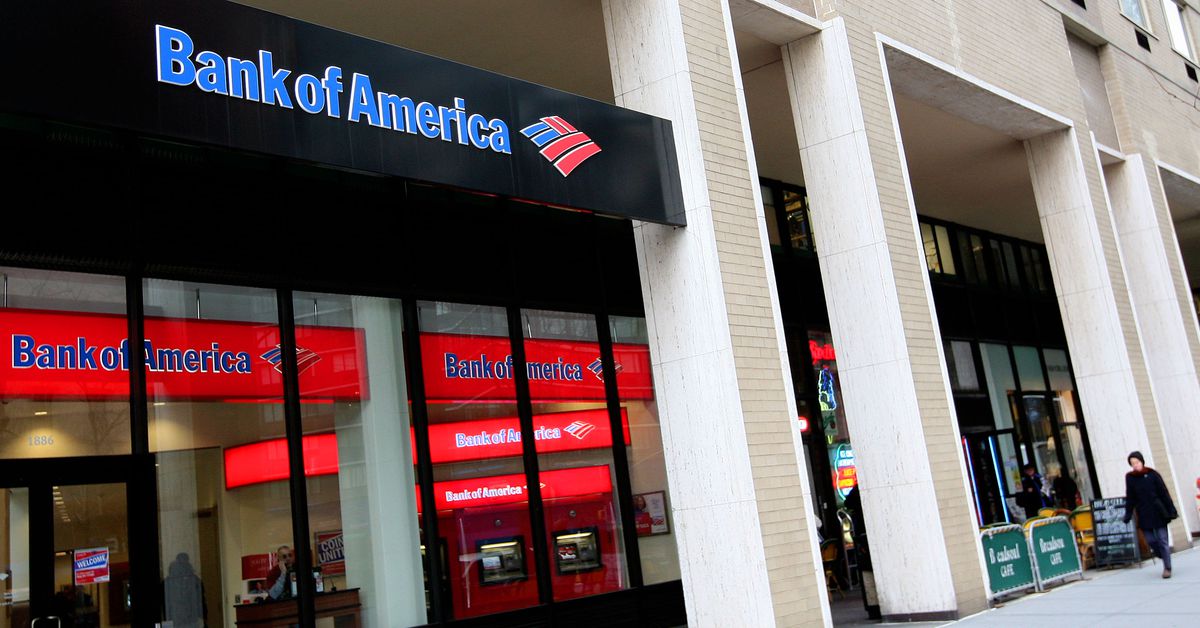
Andrew Caroselli, an 18-year-old in Philadelphia, has built an empire by tearing open sports card packs on TikTok. He carefully pleats back the foil at the corners and surgically extracts the cardboard, hoping to find a rarity — Aaron Rodgers, LeBron James, Mike Trout — hiding inside. “Steady, steady,” he repeats, as he unsheathes a Panini Prizm Justin Herbert autographed rookie, with an estimated value around $2,000, from its plastic sleeve before carefully encasing it in a thick cardholder.
Caroselli is not a longtime card-shop hermit. Instead, he tells me, he first became interested in the card business by listening to the advice of serial entrepreneur, YouTuber, and hustle-guy extraordinaire Gary Vaynerchuk, a.k.a. Gary Vee. Over the past year, Vaynerchuk has published dozens of videos to his YouTube channel preaching about the lucrativeness of the sports card sector. The goal, as always, is to identify certain athletes whose associated memorabilia will escalate in value as their legacy grows — if you think Luka Doncic is an MVP, now is a great time to start purchasing Doncic rookie cards.
Once those social media power brokers started storming the market, says Caroselli, people like him were soon to follow.
“If you told me four or five years ago that you were collecting cards, I’d be like, ‘Okay, that’s kinda weird.’ I collected cards as a kid, but then I grew out of it,” he says. “But I think when guys like Gary Vee talked up cards, they became culturally relevant. [That endorsement] is gonna cause a boom.”
When I called Caroselli in late June, he was moving into a brand new office in north Philly. This recent high school graduate is the proud owner of his very own startup — called Vortex Sportscards — which specializes in a somewhat esoteric money-making operation. Basically, Caroselli purchases expensive sealed boxes of cards off the internet, and opens them live on either Instagram or TikTok. Customers of Vortex Sportscards can reserve certain packs inside the case for a flat fee. (Like, say, $150.) You tune in, watch Caroselli leaf through the cards, and hope that your assigned slot will contain enough shimmering paperboard to exceed the price of admission. (Caroselli mails the cards to each of the buyers after the stream.) Or you strike out, and hope for better luck next time. This is called a “box break,” and it’s one of the many different ways card collecting has infected the internet.
Caroselli is far from the only young person working this corner. The card mania is white hot, and thousands of impresarios are leveraging this confusing, chaotic era of social media to breathe new life into a prehistoric hobby.
“Everyone thinks cards are cool now. Everyone wants to get into it. All my friends want to get into it and are asking to work with me,” says Caroselli. “It’s crazy what’s happened in six months.”
There’s no apt way to articulate the warp speed momentum that made cards relevant again, so instead, let me tell you about some numbers. In late April, a LeBron James rookie card sold for $5.2 million in a record-breaking private exchange. That sort of news used to be novel — sports card prices, on the high end, have been steady for decades — but Sports Illustrated notes that 23 of the 24 most expensive transactions in the sports card industry have occurred since February of 2020. This is, in that sense, a brand new trend; in the ’80s and ’90s, card printers like Topps and Upper Deck flooded the market with mass-produced paperboard, which lopsided the supply-and-demand duality and caused the industry’s investment value to take a nosedive. That all appears to be a distant memory today, when nobody is quite sure how high the numbers could go.
The same zeitgeist has carried over into all avenues of the card-collecting hobby. In May, Target announced (and then reversed) a policy banning the sale of Pokémon cards due to the huge number of scalpers who would camp out overnight to cop a hot new set. It’s easy to see why: A shrink-wrapped booster box of Pokémon sleeves went for $360,000 at auction last November. Two months earlier, a similar set changed hands for $198,000.
There have been a lot of theories that attempt to diagnose the ongoing card market volatility. Many have pointed to the coronavirus pandemic, which has kept a lot of people isolated at home with plenty of time to pick up a new hobby. Team Whistle, a sports broadcasting company, conducted a study in the middle of our long quarantine winter which found that 77 percent of millennials and Gen Zers felt a desire to engage with “comfortable content that will give them a break from the news,” with 73 percent reporting that they’ve spent money on a hobby “within the last month.” (A majority of the same sample reported card collecting to be more “comfortable” than, say, reading comic books or playing video games.)
That appetite combines neatly with the unsteady economy, which was in total freefall at the beginning of the pandemic and has shown signs of a faltering recovery in 2021. With an eroding trust in American financial systems, many people are turning to alternative means — like crypto or collectibles — to stow away their savings.
“The pandemic caused a lot of people to reevaluate what their interests were,” says Justin Goodman, a devotee of antique baseball cards who hosts the collector-centric podcast The Monster. “Collecting cards brought people happiness and comfort in a time of a lot of uncertainty and fear. The internet gave people a forum to jump right back into the scene, when the rest of the world was shut down. That was the way to live vicariously.”
The other impetus is more ethereal. There is simply a frenetic, anxious excitement in the air for card collecting, in the same way that every insurgent fad drives people to their extremes. At his ridiculous showdown with Floyd Mayweather, the YouTuber Logan Paul walked to the boxing ring with a PSA Grade 10 Charizard wrapped around his neck like a Jesus piece. (Those go for around $200,000 on the open market.) Post Malone made TMZ headlines earlier this year when he dropped thousands of dollars on Magic: The Gathering cards at a Los Angeles trade show. (He also appeared on Late Night With Seth Meyers donning a Magic-themed button-up.) Rob Kardashian is picking up six-figure-value Tom Brady holographics and guesting on celebrity box openings for charity with Steve Aoki. Card collecting has been popular in the past, but this is the first time the hobby is accompanied by legitimate A-list cosigners — draining all of its latent nerdiness away.
The wire-pullers at the top of the industry haven’t slowed down either. Card publishers continue to drive up the prices of their product with limited print runs and a wide network of quality tiers. Today, it’s possible to spend $22,000 — at retail — on a single case of baseball cards. It is that artificial stringency that powers the virality that someone like Caroselli chases; it’s fun to watch someone pan for gold, even as this business grows unseemly and excessive.
That attitude is reflected in the rest of the YouTubers and podcasters creating fresh content about cards. Their thumbnails are splashed in all caps, showing off the astronomical figures they either found inside their latest suite of boosters. “ONE OF MY BEST BOXES EVER,” reads one, punctuated by a flame emoji. “$2,000.”
Goodman returned to baseball card collecting as an adult, and he has no recollection of the sheer envy that the modern card scene can inspire. When everyone is opening packs online, when the realities of endemic scarcity are bearing down on you from all angles, you can start to feel a blind capital panic that’s far more intense than a weekly trip to the local memorabilia store.
“It creates a sense of urgency that you didn’t know existed before. In the past, you might’ve been looking around for a card that you wanted, but you didn’t know that there were 10 other people doing the same thing,” he says. “If you have a compulsion for things, it can certainly create a climate where you can get obsessed way more easily, because there’s more outlets for that energy.”
That gets at the lingering question I had for all the movers and shakers in the midst of the card boom. When the profit expectations associated with paperboard double and triple in value overnight — when Logan Paul is turning Charizards into jewelry — what impact does that have on all the young people watching from the sidelines? Every zeitgeist eventually recedes; if you’re of a certain age, you remember the reign of the Beanie Babies, or the vintage comic books, or hell, the baseball card surge in the ’80s and ’90s.
So as collectibles metastasize through YouTube and TikTok — carrying the stamp of approval from verified Money Guys like Gary Vaynerchuk — I do worry if an impressionable population is getting in over their head. Caroselli tells me he’s already received a few angry emails from moms and dads, whose children pilfered their credit cards in order to become Vortex Sportscards’ latest customers. “When they email me [asking about the charges] I’m like, ‘Do you have any kids? Maybe talk to them,’” he says. “There’s no way I can tell who is buying.”
That might be the biggest tragedy of the increased financialization of the hobby. Card collecting is supposed to be for kids. The 1986 Fleer basketball card set — which remains one of the most beloved catalogues in industry history — was originally packed with a stick of gum. Card companies have left that market behind as they focus nigh-exclusively on the hustlers. (The Sporting News notes that Topps priced its flagship card box at $170 this year. Good luck affording that with your allowance.) The investment kickbacks are great, but haven’t we forgotten why people love this hobby in the first place?
I put that question to Nate Rico, a veteran Pokémon fan who’s been uploading pack openings on YouTube since 2014, long before the scene became supercharged. Like Caroselli, Rico spends his time online tearing open foil and calling out any high-value targets he finds along the way. Those questions of responsibility have become more pertinent to him over the last year, as this scene gravitates away from the hobbyists and toward the profiteers. It’s easy to understand why Rico is still adjusting to that new normal.
“If I pull an ultra rare or something like that, I’ll put the value in the corner of my video. And I did that long before this boom happened. But I’m very, very careful,” says Rico. “My content is something that I would want to watch, and I want to make it fun. It’s stuff that takes me back to when I was a kid. I built my Pokémon card binder as a kid, and I do the exact same thing on the channel.”
That’s the refrain that Rico reiterates over and over again throughout our interview. He’s just a guy who loves Pokémon, and he misses the salad days. He tells me about the 2000s and early 2010s, when he could comfortably go to his local department store, buy up a few packs, and peacefully open them at home. No zeitgeist, no lunacy, no mind-boggling inflated price points, just his private zen. The rest of the people who’ve bought into his community have not loved the hobby for nearly as long as Rico, and he hopes that Pokémon will survive their destabilizing influence.
“If your main goal is to sell things and you aren’t collecting, you probably see this as a total positive,” he says. “But as someone who’s been collecting cards since the ’90s, this is a huge negative.”
That’s the paradox of the card renaissance: Despite the many people who want to see the numbers keep going up, there are a few holding out for the day they start to go down.
source https://www.vox.com/the-goods/22607818/trading-cards-pokemon-magic-baseball







Post a Comment
EmoticonClick to see the code!
To insert emoticon you must added at least one space before the code.